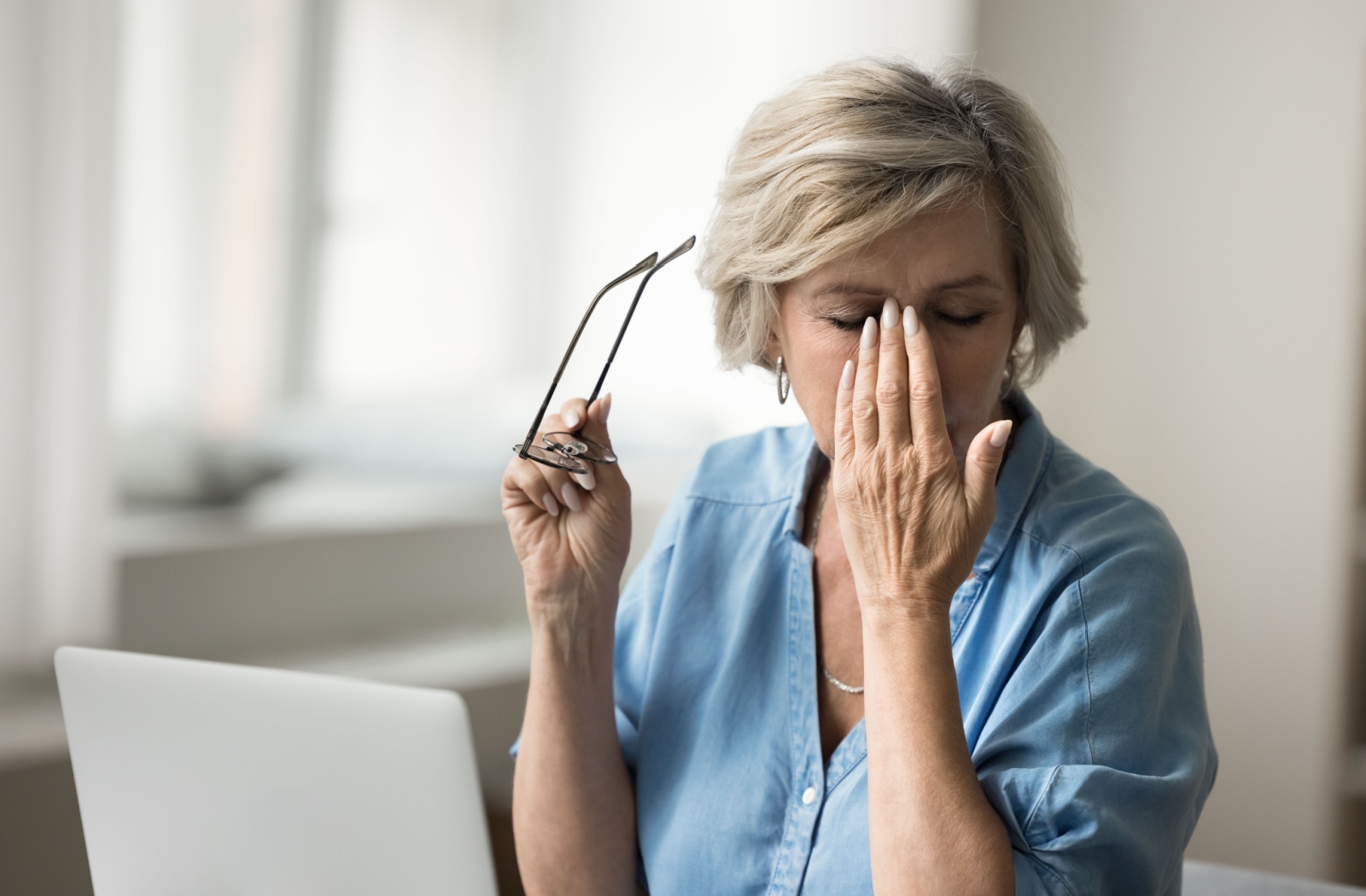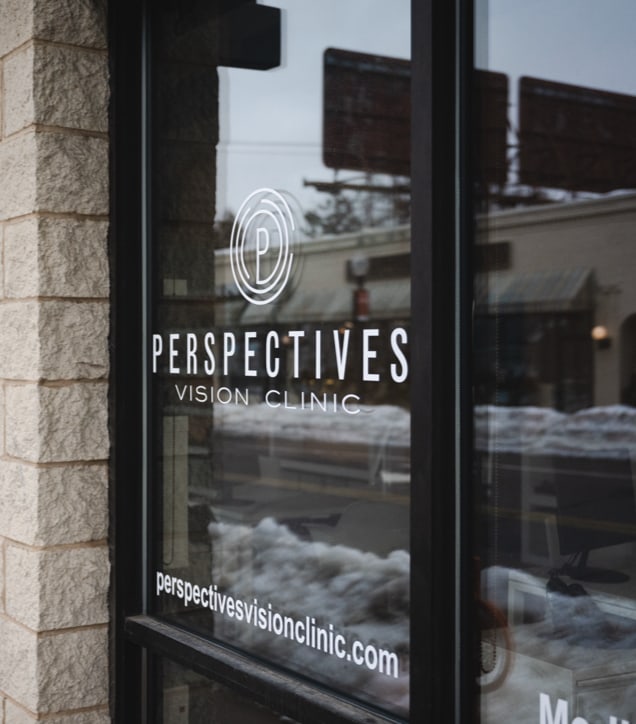A gritty, stinging, or burning feeling in your eyes can be more than a minor annoyance—it can even disrupt your whole day. If you find yourself constantly reaching for eye drops or blinking to clear your vision, you might be dealing with dry eye syndrome. It’s a common issue, but one that leaves many people wondering if they’ll ever feel comfortable again.
The good news is that relief is possible. The duration of dry eye syndrome depends on its cause. It can be either a temporary issue that resolves quickly or a long-term condition that you can manage with consistent care. Understanding what’s behind your symptoms is the first step toward finding lasting comfort.
What Are the Common Signs & Symptoms of Dry Eye?
Dry eye arises when your eyes don’t produce enough tears or good enough quality tears to stay lubricated. Symptoms can appear in one or both eyes and may come and go.
Symptoms of Dry Eye
- A scratchy or gritty feeling, like sand is in your eye
- Stinging or burning sensations
- Redness & irritation
- Periods of watery eyes followed by dryness
- Sensitivity to light
How Dry Eye Affects Your Sight
Blurry vision is a frequent complaint of those living with dry eye. This happens because a smooth, healthy tear film is necessary for clear vision. When your tear film is insufficient, the surface of your eye becomes rough, causing light to refract in irregular ways. This causes blurry vision.
What Are the Main Causes of Dry Eyes?
Dry eye syndrome happens for two main reasons: either your eyes don’t make enough tears, or the tears they do make evaporate too quickly. Several factors can contribute to these issues.
Your Environment & Daily Habits
Your surroundings and daily routine play a big part in eye health. Staring at screens for long periods can reduce your blink rate, which prevents tears from spreading evenly across your eyes. Exposure to wind, smoke, or dry air from heating and air conditioning can also cause your tears to evaporate faster.
Health Conditions & Medications
Certain health conditions, like autoimmune disorders or hormonal changes, can lead to dry eyes. Some common medications can also reduce tear production as a side effect. For example, certain antidepressants, antihistamines, or blood pressure medicines may contribute to dryness.
Can Dry Eyes Go Back to Normal?
The duration of dry eye syndrome depends on its underlying cause. For some people, it’s a temporary inconvenience that fades away, while for others, it becomes a long-term condition that needs consistent management. The goal is always to restore comfort and protect your vision.
Short-Term vs. Chronic Dry Eye
If your symptoms are from a temporary cause, like a windy day or a long flight, they usually resolve once the trigger is gone. This type of acute dry eye often responds well to simple at-home care.
If your symptoms are due to an underlying health condition or are related to age, it’s often a long-term issue. While dry eye may not go away completely, the discomfort that it causes can be managed effectively with proper care. You don’t have to accept this as a normal part of life.
The Role of a Treatment Plan
A consistent treatment plan can make a significant difference in how your eyes feel every day. The right approach helps manage symptoms so you can focus on what matters most.
Treatment Options for Dry Eye Relief
There are many ways to manage dry eye symptoms, from simple adjustments you can make at home to professional treatments. The goal is to restore tear production. Finding what works for you might involve trying a few different approaches.
Changes You Can Make at Home
- Use over-the-counter artificial tears or eye drops.
- Take frequent breaks from screens using the 20-20-20 rule.
- Use a humidifier to add moisture to the air in your home or office.
- Wear wraparound sunglasses outdoors to protect your eyes from the wind.

Professional Care for Dry Eyes
If at-home care isn’t providing enough relief, professional treatments can offer more effective options. Your eye doctor might suggest prescription eye drops that help your eyes produce more tears. Other options may include special eyelid cleansers or in-office procedures designed to improve tear quality.
When to See an Eye Doctor for Your Dry Eyes
If your dry eye symptoms are persistent, interfere with your daily activities, or seem to get worse, it’s a good idea to seek professional advice. Your eye doctor can perform tests to determine the cause of your dryness. From there, they can create a personalized plan to help you feel better.
Signs Your Dry Eye Is Severe
If left unmanaged, chronic dry eye can affect your quality of life and potentially harm the surface of your eye. Constant irritation, significant pain, or noticeable changes in your vision are all signs that you should see a professional. Proper care can help protect your eyes in the long run.
Find a Solution with Local Optometrists
You don’t have to live with the constant discomfort of dry eyes. As your optometrists in Minneapolis, we can diagnose your condition and recommend a course of action. Together, we can find a way to help you find lasting comfort and clear vision. At Perspectives Vision Clinic, we listen to your concerns and work with you to find a solution that fits your lifestyle. If you’re tired of dealing with dry, irritated eyes, contact us today to schedule a consultation. We’re here to help you see and feel your best.










